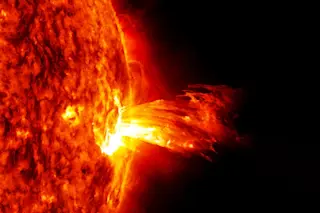[NOTE: Whenever I write about actual cosmic events that might possibly affect us on Earth, I get scared emails from some folks. So let me be up front: there are no stars close enough to Earth to hurt us should they explode. Nothing I write in this post changes that; I'm talking about a star that can go supernova that's closer than I thought any was, but still much too far away to do much to us. So don't panic. But do please enjoy the over-the-topness of what happens when a star explodes. Because it's cool.]
Back in January I started writing what I call BAFacts; daily snippets of astronomy factoids. I post them on Twitter and Google+, and I keep an archive of them on the blog, too. On May 13 I tweeted this one: BAFact: A supernova has to be less than about 75 light years away to ...













